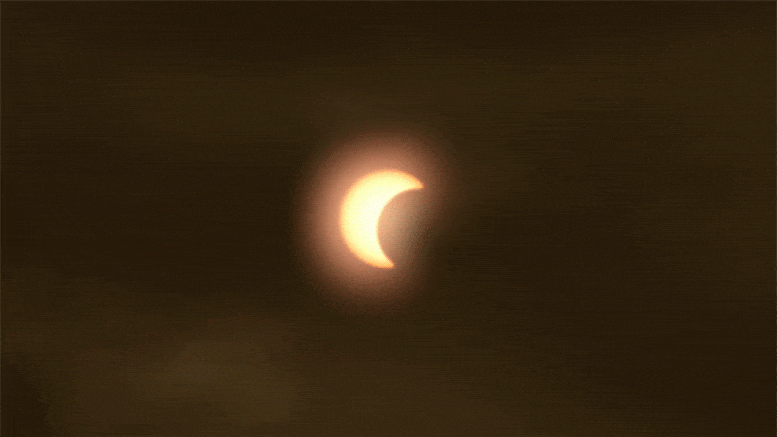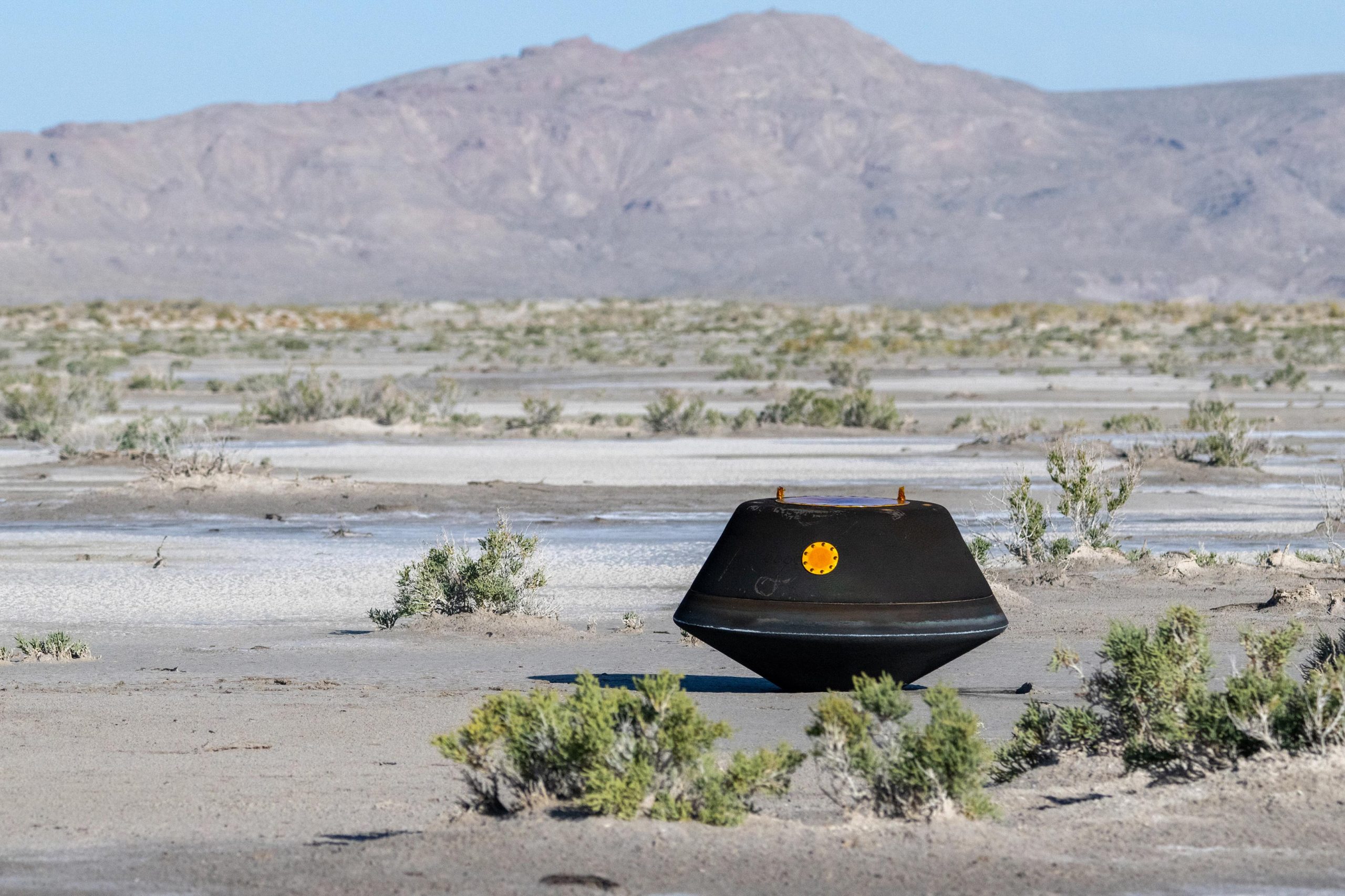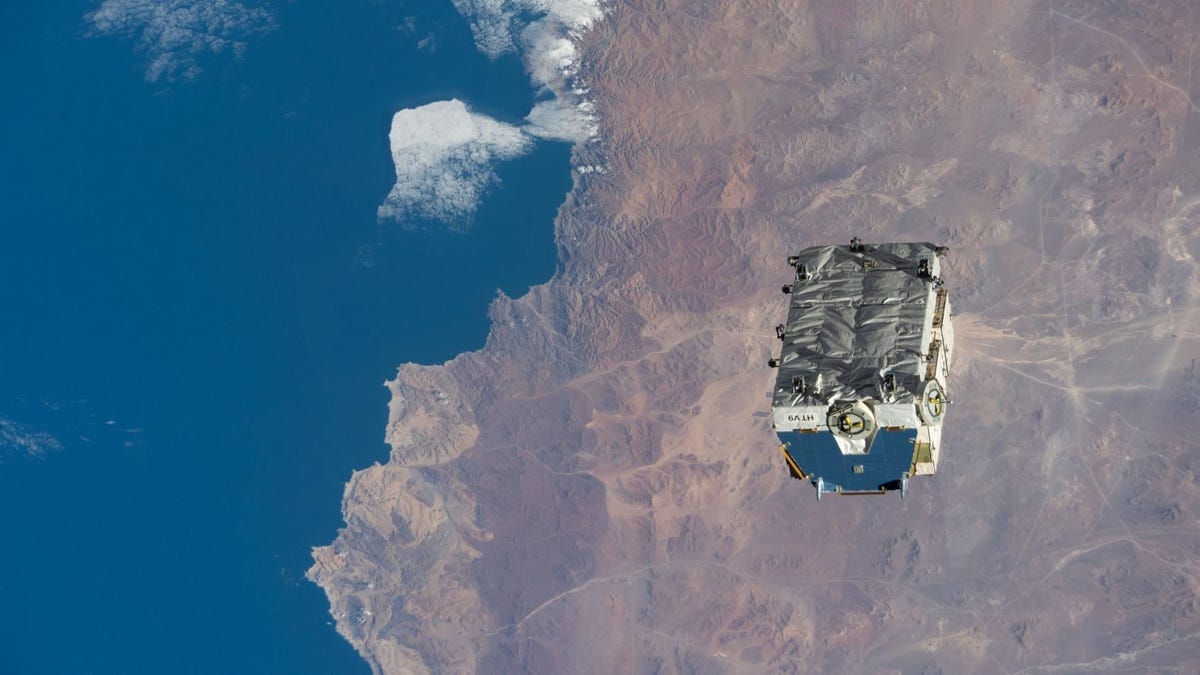
The sample return capsule from NASA’s OSIRIS-REx mission is seen shortly after touching down in the desert on September 24, 2023, at the Department of Defense’s Utah Test and Training Range. The sample was collected from the asteroid Bennu in October 2020 by NASA’s OSIRIS-REx spacecraft. Credit: NASA/Keegan Barber
NASA‘s first asteroid sample return mission is back on Earth…
A record ride in space for a NASA astronaut…
And NASA’s Artemis II mission is making prelaunch progress…
A few of the stories to tell you about – This Week at NASA!
NASA’s First Asteroid Sample Return Mission Lands
On September 24, the OSIRIS-REx sample return capsule – with samples of rock and dust from asteroid Bennu – made its historic return to Earth, marking the end of NASA’s first asteroid sample return mission.
“And landing of the OSIRIS-REx sample return capsule!”
The next day, the sample return capsule was flown to NASA’s Johnson Space Center in Houston, where the sample material inside it will be cared for, stored, and shared with scientists around the world.

Expedition 69 NASA astronaut Frank Rubio is helped out of the Soyuz MS-23 spacecraft just minutes after he Roscosmos cosmonauts Sergey Prokopyev and Dmitri Petelin, landed in a remote area near the town of Zhezkazgan, Kazakhstan on Wednesday, Sept. 27, 2023. The trio are returning to Earth after logging 371 days in space as members of Expeditions 68-69 aboard the International Space Station. For Rubio, his mission is the longest single spaceflight by a US astronaut in history. Credit: NASA/Bill Ingalls
Record-Setting NASA Astronaut Returns to Earth
The week saw another historic return from space – this one on September 27 – by NASA astronaut Frank Rubio.
After spending a US record-setting 371 days in space, Rubio landed safely in Kazakhstan, along with two crewmates.
“Rubio’s record ride comes to an end.”
Rubio’s extended mission provides researchers the opportunity to observe the effects of long-duration spaceflight on humans.

Engineers and technicians from NASA, Aerojet Rocketdyne, and Boeing at NASA’s Michoud Assembly Facility in New Orleans have installed all four RS-25 engines to the core stage for NASA’s Space Launch System rocket that will help power the first crewed Artemis mission to the Moon. The yellow core stage is seen in a horizontal position in the final assembly area at Michoud. The engines are arranged at the bottom of the rocket stage in a square pattern, like legs on a table. Credit: NASA/Eric Bordelon
Artemis II Rocket and Crew Making Progress
Teams at NASA’s Michoud Assembly Facility in New Orleans have structurally joined all four RS-25 engines onto the core stage of NASA’s Artemis II Moon rocket.
Meanwhile, the Artemis II astronauts recently completed the first in a series of integrated ground system tests at NASA’s Kennedy Space Center.
The Artemis II flight test around the Moon and back is the agency’s first crewed mission under Artemis.

This conceptual animation is an example of what you might expect to see through certified solar-viewing glasses or a handheld solar filter during an annular solar eclipse, like the one happening over the United States on October 14, 2023. Annular eclipses are famous for the “ring of fire” effect that appears around the edge of the Moon. This happens because the Moon is slightly farther from Earth and appears too small to block out the Sun completely. Credit: NASA
Previewing the October 14 “Ring of Fire” Annular Eclipse
On October 14, an annual solar eclipse will cross the US from Oregon to Texas. An annual eclipse is also known as a “ring of fire” eclipse because the Moon doesn’t entirely block out the Sun – but instead leaves a bright ring of Sun. Learn more about eclipses at solarsystem.nasa.gov/eclipses.
That’s what’s up this week @NASA.

“Explorer. Unapologetic entrepreneur. Alcohol fanatic. Certified writer. Wannabe tv evangelist. Twitter fanatic. Student. Web scholar. Travel buff.”



